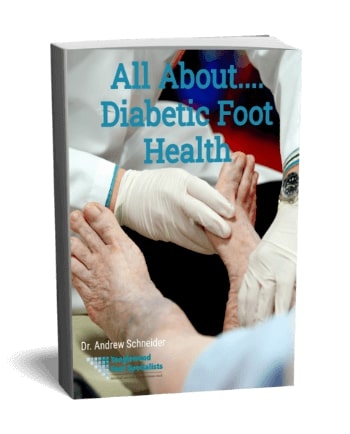These days, it seems like you’re prescribed a pill for any littler ailment. We end up with medications from different doctors, but they may not play nicely together. Luckily, medical foods can help manage chronic conditions by addressing the metabolic deficiencies associated with certain diseases. In today’s post, we’ll discuss how medical foods can treat certain food and ankle issues, under the supervision of a healthcare professional.
What are medical foods? ![vitamin b1]()
Medical foods are considered a unique category regulated by the FDA. Unlike supplements, these foods are intended for use under the supervision of a medical professional, and can only be obtained with a prescription. They are used to manage distinct nutritional needs that result from a specific condition. They’re a great alternative to pharmaceuticals if you can’t tolerate them or prefer a more natural solution.
What do they treat?
Medical foods are particularly useful for addressing symptoms of peripheral neuropathy. With this condition, damage to the peripheral nerves in your body cause you to lose sensation in your feet, making it difficult to experience pain or heat, or to maintain your balance. In their place, you may feel numbness, tingling, or burning pain. Some people feel like they’re wearing socks, even when barefoot.
For many patients, diabetes is the cause of their neuropathy, as high blood sugar levels result in nerve damage. Chemotherapy, alcoholism and some autoimmune diseases can also lead to neuropathy. And, in some cases, vitamin deficiencies result in the nerve damage that causes neuropathy.
Once damaged, it will be difficult—but may be possible—to repair those nerves. So, that’s the bad news. But here’s the good news: you can still manage this condition. And one way to do so is with medical foods.
Using Medical Foods to Manage Neuropathy
In our Houston podiatry practice, Dr. Andrew Schneider manages neuropathy with a medical food that combines several ingredients. It includes L-methylfolate calcium to increase blood flow and aid with nerve repair; vitamin B12 to increase peripheral nerve repair; vitamin D3 to support nerve health; and vitamins B1 and B6 to remove harmful substances and pathways that can damage the nerve. We’ll also include alpha lipoic acid to increase blood flow to the peripheral nerves and to decrease inflammation. Finally, there will be riboflavin, which can offer protection to your arteries.
But how will all these ingredients work together to help you feel better? Medical foods work differently from pain medications. While medication helps mask painful symptoms, they don’t address the pain’s root cause. Plus, they have a variety of unwanted side effects.
In contrast, the combination of ingredients in medical foods work together to naturally restore blood flow and help repair damaged nerves. Because these ingredients can address the root cause of your symptoms, it may take up to six months before you notice a difference. However, once they meet your metabolic needs, you should notice an improvement in symptoms such as numbness, burning or shooting pain, tingling in the feet or even poor sleep quality.
Muscle and Bone Injuries
Medical foods can also help heal musculoskeletal injuries like sprains or fractures. There are specifically formulated nutrients that can directly support tissue repair, reduce inflammation and help with pain management. These medical foods will give your body exactly the building blocks it needs to mend tiny cracks in your bone or to heal a strained ligament. We recommend mixes that include amino acids, vitamins and plant-based anti-inflammatories. This unique blend actively fuels your recovery, instead of leaving you hanging out on the couch, waiting for your body to heal.
Got a fracture? We’ll find a medical food with calcium citrate, which supports bone growth as well as nerve and muscle function. It also decreases bone loss.
Also in the mix? Magnesium, to increase vitamin D absorption while improving bone density and health. Of course there will be vitamin D3, to increase calcium absorption; zinc to increase bone cell and collagen production; and vitamin K2, which helps direct calcium where it needs to go to heal breaks in your bone. In short, the medical food approach goes beyond the basics, offering a concentrated formula designed specifically to support bone formation and speed up the healing process. Furthermore, once you resume normal activities, you’ll be less likely to wind up reinjuring yourself.
Medical Foods to Improve Nail Health
We can also improve the health of brittle, discolored or irregular nails with this alternative treatment option. Basically, your toenails are little windows into your nutritional health. When they turn yellow, split or crumble, that’s a cry for help from your body. And that’s where medical foods can come to the rescue. Targeted nutrients are formulated to fill in the gaps that regular diet or over-the-counter supplements can’t address, targeting deficiencies that, when left alone, will damage your nail health.
To improve nail health, we use a medical food with Biotin-D and Hydrolyzed Type-1 collagen, both of which improve nail strength and thickness. Cynatine HNS improves nail strength, thickness, elasticity and moisture retention. It also regulates nail color. L-methylfolate calcium also regulates nail color while improving blood flow and nail growth. Finally, we include silicon to further improve nail strength.
Final Thoughts
So many solutions in modern medicine involve placing band-aids on unwanted symptoms instead of addressing their root causes to permanently resolve your concerns. But when it comes to treating toenail problems, foot and ankle sprains or fractures, and peripheral neuropathy, a better option is available. Reach out to our office and request a consultation. When you come in, ask Dr. Andrew Schneider if there’s a medical food designed to help support your body’s natural healing by addressing nutritional deficiencies.















